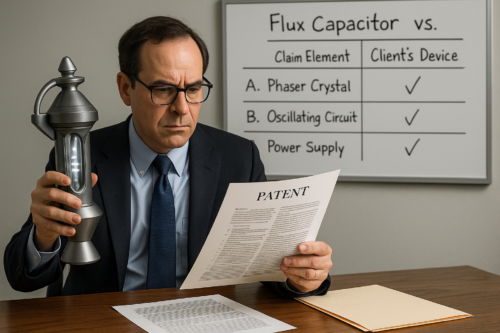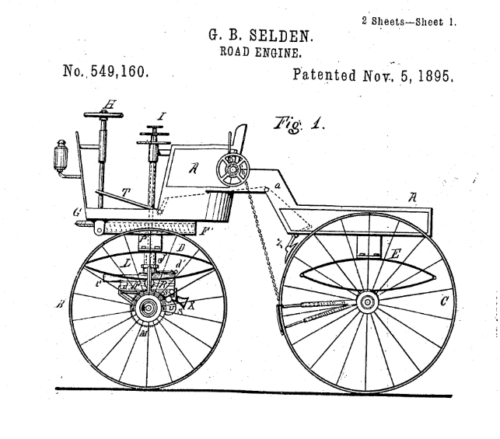
When launching a new product, service, or technology, you want to know whether you can do so without infringing third party intellectual property. To make this determination, it is often necessary to conduct a Freedom to Operate (FTO) search and analysis. An FTO analysis includes a search for patents in the relevant area of technology to evaluate whether you can make, use, sell, or import a product or process without infringing the valid intellectual property rights of others, particularly patents. Failure to secure FTO can result in costly patent infringement litigation that threatens your product, profits, and reputation.
This article provides an overview of FTO searches and analyses, and explains their role and value in business development in the patent context.
Freedom to Operate refers to the legal ability to develop, manufacture, use, market, sell, or import a product or process in a specific jurisdiction without infringing the valid intellectual property (IP) rights of others, most commonly patents. It is important to understand that FTO is not a right in itself, unlike a patent, which grants the holder the right to exclude others. Instead, FTO is a condition that must be verified through detailed analysis of the existing IP landscape to determine whether your actions would violate the enforceable rights of others.
It should be understood that owning a patent on your own innovation does not automatically confer the right to commercialize the patented technology. Patents are often incremental, and your invention may build upon or incorporate elements of prior patented technologies. As a result, even patented innovations can potentially infringe other existing patents or pending patent applications. Patentability concerns whether your invention is new and non-obvious; FTO concerns whether commercializing your invention infringes others’ rights.
A thorough freedom to operate analysis involves identifying relevant patents, reviewing the patent and its examination record to determine the meaning and scope of the patent claims, and assessing whether your product or process would fall within the scope of the patent claims. This proactive step is necessary to manage infringement risk and avoid costly patent litigation.
An FTO analysis is a critical component of any product development and commercialization strategy, and its importance spans several key stages of the business lifecycle. At the early stage of development, conducting an FTO search can help identify potential obstacles in product design and research and development, allowing companies to make adjustments before investing significant time and resources.
Prior to making a significant investment, whether in manufacturing, marketing, or distribution, an FTO analysis minimizes the risk of encountering unforeseen patent barriers that could halt progress or result in costly litigation. Patent infringement lawsuits can result in significant litigation costs, injunctions, and costly damage awards.
FTO analyses are also a key element of IP due diligence during licensing negotiations, mergers, acquisitions, and joint ventures, where freedom from third-party patent risk can materially affect the value of a deal. Without proper FTO, companies risk litigation, reputational damage, and significant business disruptions that could derail product launch or long-term profitability.
An FTO search is a foundational step in determining whether your new product, process, technology or other innovation may infringe on the patent rights of others. A patent search is conducted to identify relevant patents and patent claims that could impact your ability to bring the product to market without legal risk. This includes reviewing issued and enforceable patents, which are actively in force and could form the basis of an infringement lawsuit. It also involves analyzing pending patent applications (which are typically published 18 months after their initial filing date) that may eventually issue with enforceable claims. Furthermore, particular attention is paid to competitor patents, as these are the most likely to be enforced in the market space you’re entering.
Because IP rights are territorial, the FTO search must be conducted separately for each jurisdiction where you intend to manufacture, sell, or import the product, e.g., the US, UK, EU, Japan, and others. A finding of FTO in one country does not guarantee freedom in another, making it essential to tailor searches to each target market. Reliable tools for conducting such searches include public patent databases such as the USPTO, Espacenet (by the EPO), and WIPO’s Patentscope, which offer access to global patent documents. However, it should be understood that examining the patent itself is insufficient. The patent's examination record (the "prosecution history") must also be closely examined to determine how the patentee distinguished the patent claims from the prior art, which informs the meaning of the patent claims. The patent claims must be understood or construed in view of the entire patent record.
An FTO legal opinion from a qualified patent attorney is needed to properly assess the legal risks associated with launching a new product, process, or technology. An FTO opinion provides a detailed, reasoned assessment of whether the product or process is likely to infringe any identified patents, based on a review of relevant patent claims and the technical features of the innovation. These opinions are valuable at multiple stages of product development. They help inform design decisions, especially when modifications or design-arounds are necessary to avoid infringement.
In the context of investments, licensing deals, or acquisitions, an FTO opinion demonstrates thorough due diligence, increasing investor and partner confidence. Importantly, such opinions may also serve as a defense against allegations of willful infringement, potentially limiting exposure to enhanced damages in litigation.
A standard FTO opinion typically includes a detailed description of the product or technology, the search strategy and databases used, a thorough assessment of infringement risk, and a legal analysis of the scope of potentially relevant patent claims. This structured format ensures that the analysis is comprehensive, legally sound, and clearly communicated to business stakeholders.
Your freedom to operate is not a one-time determination, it is a dynamic assessment that must evolve alongside changes in both your product and the broader patent landscape. Over time, new patent applications are published, existing patents may expire, and new patents are granted, all of which can impact your infringement risk. In addition, as your product undergoes refinements during the development cycle, features that were not previously at issue may suddenly fall within the scope of an existing or newly issued patent. Therefore, what was once a low-risk assessment may shift, exposing your business to potential legal threats if not properly monitored.
To mitigate these risks, it is critical to follow several best practices. First, always update your FTO analysis after any significant product design changes. Second, actively monitor patent filings from key competitors, as these may signal future IP barriers. Third, make it a policy to reassess your FTO status periodically in all relevant jurisdictions where you intend to operate.
One effective strategy for managing patent infringement risk is to modify your product or process to avoid falling within the scope of a competitor’s patent claims, if possible. This approach, known as “designing around,” enables businesses to move forward with commercialization while minimizing the likelihood of legal disputes. The process begins by carefully analyzing and construing the relevant patent claims to identify specific claim limitations, the elements that define the legal boundaries of the patented invention. Once these limitations are understood, the product or process may be altered to omit or substitute one or more of those elements, thereby aiming to avoid infringement.
However, designing around is not merely a technical exercise, it must be validated through legal analysis. After the design changes are implemented, a follow-up analysis should be conducted to confirm that the revised product or process does not fall within the scope of the identified patent claims. This verification ensures that the redesign successfully mitigates the infringement risk.
If a patent presents a significant infringement risk and designing around is not technically or commercially feasible, there are still several strategic options available to mitigate liability. One common approach is to negotiate a license with the patent holder, which provides the legal right to use the patented technology in exchange for agreed-upon terms, often including royalties.
Alternatively, a company may seek to acquire the patent outright, thereby eliminating the risk entirely. In some cases, it may be appropriate to challenge the validity of the patent through formal mechanisms such as ex parte reexamination, post-grant review, opposition proceedings, or patent litigation. Each of these approaches involves different costs, timelines, and levels of legal risk. Some may be quicker but less certain, while others are more resource-intensive but potentially more definitive. For this reason, it is essential to consult with experienced patent counsel to evaluate and implement the most effective risk management strategy.
Freedom to operate studies can require a significant investment of time and resources, especially in complex and highly competitive industries like biotechnology, pharmaceuticals, or electronics, where overlapping patents and dense patent landscapes are common. However, the cost of an FTO analysis is almost always far less than the expense of defending a patent infringement lawsuit. Several factors influence the overall cost, including the breadth of the product scope, the number of jurisdictions being analyzed, the technical complexity of the product or process, and the volume of potentially relevant patents. To manage these costs effectively, businesses should begin the FTO process early in product development and carefully define both the geographic reach and technical focus of the analysis.

One of the most instructive historical examples of freedom to operate (FTO) in practice is the U.S. automobile industry’s confrontation with the Selden patent in the early 20th century. George Selden obtained U.S. Patent No. 549,160 in 1895, which broadly claimed the concept of a gasoline-powered automobile. The patent was licensed exclusively to the Electric Vehicle Company, which in turn formed the Association of Licensed Automobile Manufacturers (ALAM) to enforce the patent and extract royalties from car manufacturers.
The upstart Ford Motor Company refused to join the ALAM or pay royalties, believing that the Selden patent did not cover its vehicles. Ford commissioned a detailed FTO analysis by patent attorney Ralzemond Parker, who concluded that Ford’s engine technology, which was based on the Otto cycle, was materially different from the Brayton-cycle engine described in the Selden patent. Based on this legal opinion, Ford publicly indemnified its customers and continued production.
The dispute culminated in Columbia Motor Car Co. v. C. A. Duerr & Co., 184 F. 893 (2d Cir. 1911), where the Second Circuit ultimately held that Ford’s automobiles did not infringe the patent, validating Ford’s position and FTO strategy.
This landmark case underscores the power of a thorough FTO analysis in guiding business decisions and resisting overbroad patent assertions. It also illustrates how legal clarity, grounded in technical distinctions and claim construction, can provide the foundation to proceed confidently in the face of aggressive enforcement efforts.
A proper freedom to operate strategy is essential due diligence prior to launching any new technology, product, or service. It allows your company to proceed with development and commercialization while limiting legal exposure.
While no FTO opinion can offer a 100% guarantee, the process of conducting FTO searches, reviewing identified patents, and obtaining legal guidance is critical to making informed, strategic decisions. By treating FTO analysis as an integral part of your due diligence, you improve your chances of a successful, sustainable market entry.
If you need to discuss an FTO analysis, patentability search, infringement analysis, or other patent matter, contact our office for a free consultation.
© 2025 Sierra IP Law, PC. The information provided herein does not constitute legal advice, but merely conveys general information that may be beneficial to the public, and should not be viewed as a substitute for legal consultation in a particular case.

"Mark and William are stellar in the capabilities, work ethic, character, knowledge, responsiveness, and quality of work. Hubby and I are incredibly grateful for them as they've done a phenomenal job working tirelessly over a time span of at least five years on a series of patents for hubby. Grateful that Fresno has such amazing patent attorneys! They're second to none and they never disappoint. Thank you, Mark, William, and your entire team!!"
Linda Guzman

Sierra IP Law, PC - Patents, Trademarks & Copyrights
FRESNO
7030 N. Fruit Ave.
Suite 110
Fresno, CA 93711
(559) 436-3800 | phone
BAKERSFIELD
1925 G. Street
Bakersfield, CA 93301
(661) 200-7724 | phone
SAN LUIS OBISPO
956 Walnut Street, 2nd Floor
San Luis Obispo, CA 93401
(805) 275-0943 | phone
SACRAMENTO
180 Promenade Circle, Suite 300
Sacramento, CA 95834
(916) 209-8525 | phone
MODESTO
1300 10th St., Suite F.
Modesto, CA 95345
(209) 286-0069 | phone
SANTA BARBARA
414 Olive Street
Santa Barbara, CA 93101
(805) 275-0943 | phone
SAN MATEO
1650 Borel Place, Suite 216
San Mateo, CA, CA 94402
(650) 398-1644. | phone
STOCKTON
110 N. San Joaquin St., 2nd Floor
Stockton, CA 95202
(209) 286-0069 | phone
PORTLAND
425 NW 10th Ave., Suite 200
Portland, OR 97209
(503) 343-9983 | phone
TACOMA
1201 Pacific Avenue, Suite 600
Tacoma, WA 98402
(253) 345-1545 | phone
KENNEWICK
1030 N Center Pkwy Suite N196
Kennewick, WA 99336
(509) 255-3442 | phone
2023 Sierra IP Law, PC - Patents, Trademarks & Copyrights - All Rights Reserved - Sitemap Privacy Lawyer Fresno, CA - Trademark Lawyer Modesto CA - Patent Lawyer Bakersfield, CA - Trademark Lawyer Bakersfield, CA - Patent Lawyer San Luis Obispo, CA - Trademark Lawyer San Luis Obispo, CA - Trademark Infringement Lawyer Tacoma WA - Internet Lawyer Bakersfield, CA - Trademark Lawyer Sacramento, CA - Patent Lawyer Sacramento, CA - Trademark Infringement Lawyer Sacrament CA - Patent Lawyer Tacoma WA - Intellectual Property Lawyer Tacoma WA - Trademark lawyer Tacoma WA - Portland Patent Attorney - Santa Barbara Patent Attorney - Santa Barbara Trademark Attorney